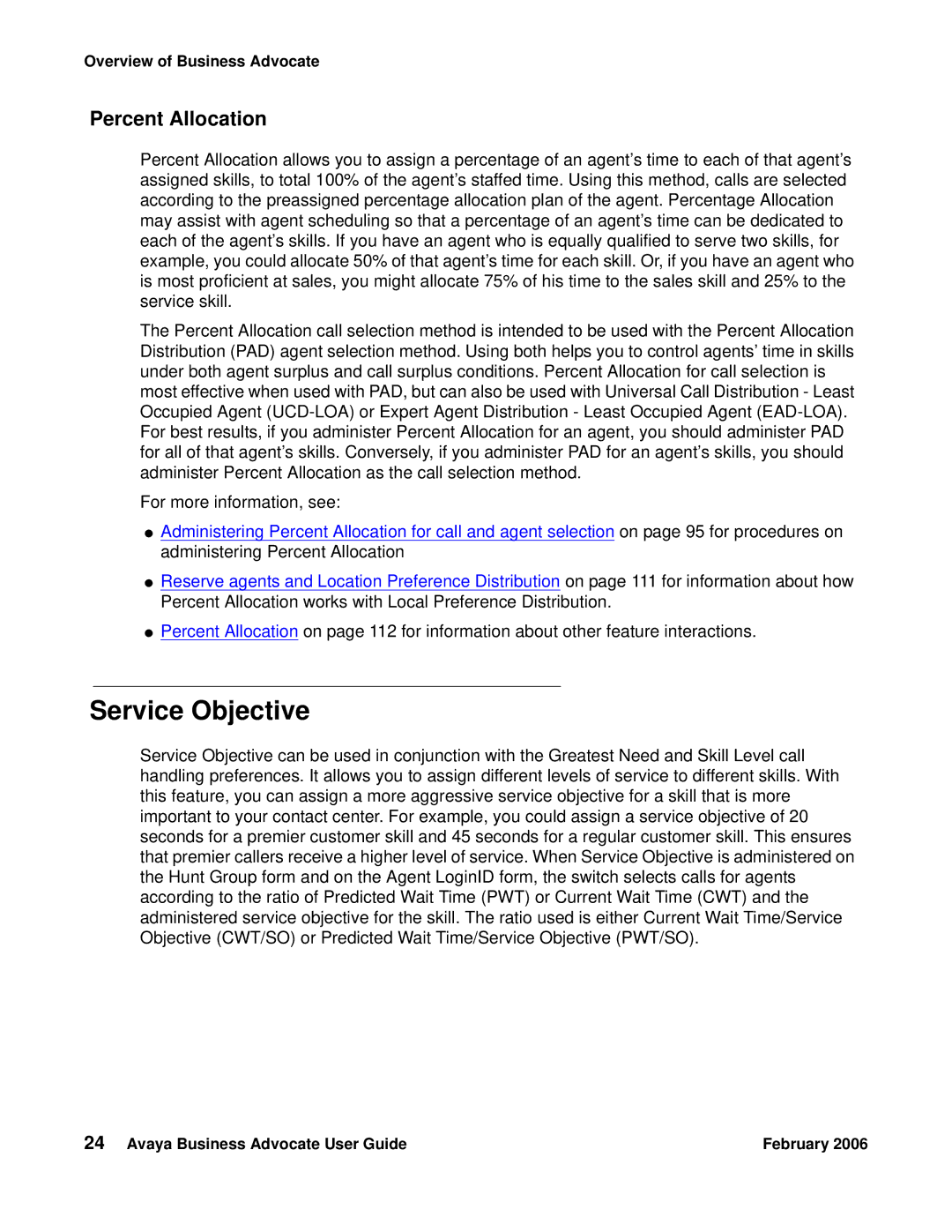Overview of Business Advocate
Percent Allocation
Percent Allocation allows you to assign a percentage of an agent’s time to each of that agent’s assigned skills, to total 100% of the agent’s staffed time. Using this method, calls are selected according to the preassigned percentage allocation plan of the agent. Percentage Allocation may assist with agent scheduling so that a percentage of an agent’s time can be dedicated to each of the agent’s skills. If you have an agent who is equally qualified to serve two skills, for example, you could allocate 50% of that agent’s time for each skill. Or, if you have an agent who is most proficient at sales, you might allocate 75% of his time to the sales skill and 25% to the service skill.
The Percent Allocation call selection method is intended to be used with the Percent Allocation Distribution (PAD) agent selection method. Using both helps you to control agents’ time in skills under both agent surplus and call surplus conditions. Percent Allocation for call selection is most effective when used with PAD, but can also be used with Universal Call Distribution - Least Occupied Agent
For more information, see:
●Administering Percent Allocation for call and agent selection on page 95 for procedures on administering Percent Allocation
●Reserve agents and Location Preference Distribution on page 111 for information about how Percent Allocation works with Local Preference Distribution.
●Percent Allocation on page 112 for information about other feature interactions.
Service Objective
Service Objective can be used in conjunction with the Greatest Need and Skill Level call handling preferences. It allows you to assign different levels of service to different skills. With this feature, you can assign a more aggressive service objective for a skill that is more important to your contact center. For example, you could assign a service objective of 20 seconds for a premier customer skill and 45 seconds for a regular customer skill. This ensures that premier callers receive a higher level of service. When Service Objective is administered on the Hunt Group form and on the Agent LoginID form, the switch selects calls for agents according to the ratio of Predicted Wait Time (PWT) or Current Wait Time (CWT) and the administered service objective for the skill. The ratio used is either Current Wait Time/Service Objective (CWT/SO) or Predicted Wait Time/Service Objective (PWT/SO).
24 Avaya Business Advocate User Guide | February 2006 |
